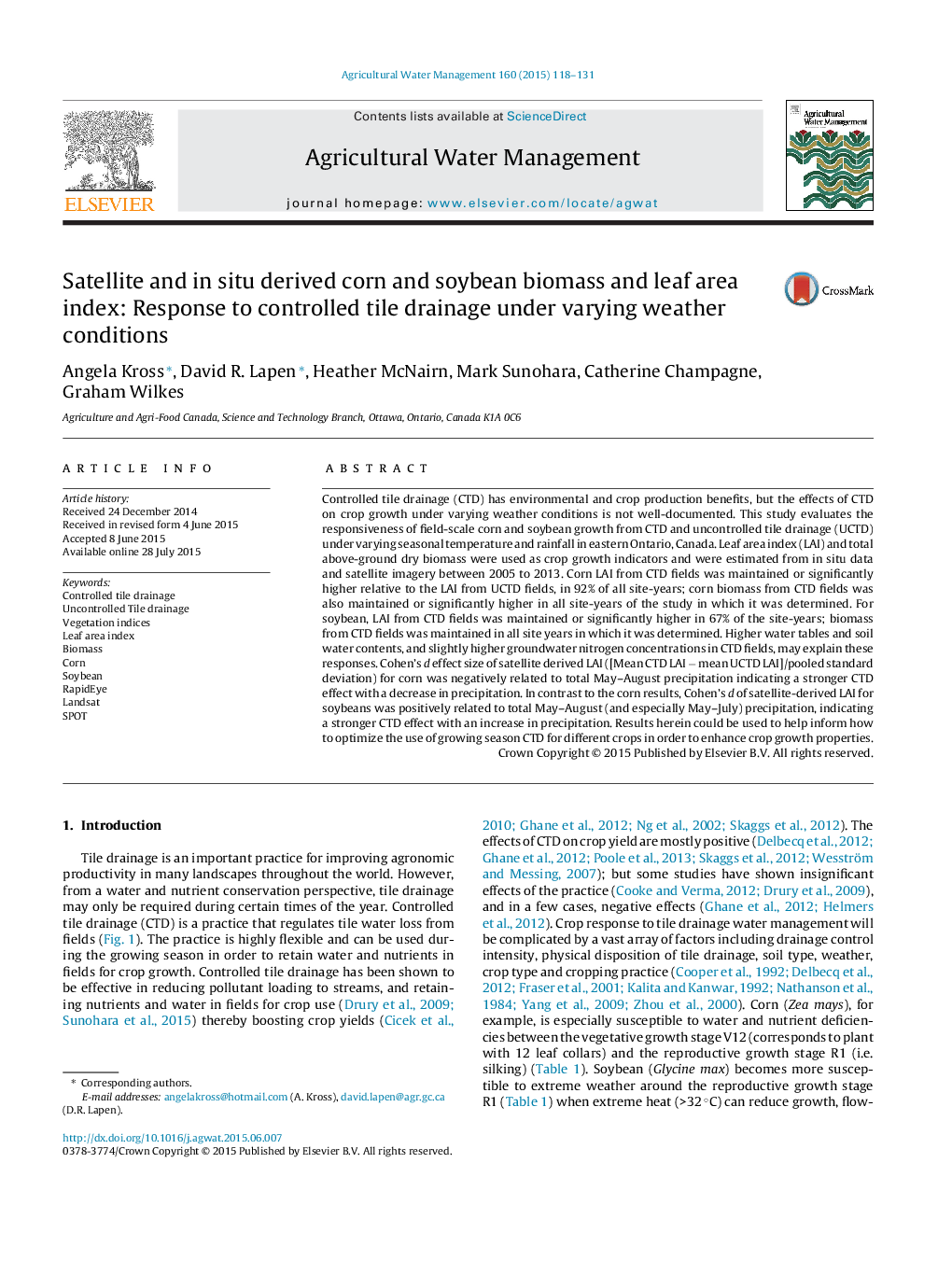| کد مقاله | کد نشریه | سال انتشار | مقاله انگلیسی | نسخه تمام متن |
|---|---|---|---|---|
| 4478410 | 1622919 | 2015 | 14 صفحه PDF | دانلود رایگان |
• We use satellite and ground data to study the impact of controlled tile drainage on crop growth.
• Controlled tile drainage augments corn growth in extreme dry years.
• The practice mostly maintains or boosts corn and soybean leaf area index and biomass.
• Crop response to the practice relates to seasonal rainfall (May–August).
Controlled tile drainage (CTD) has environmental and crop production benefits, but the effects of CTD on crop growth under varying weather conditions is not well-documented. This study evaluates the responsiveness of field-scale corn and soybean growth from CTD and uncontrolled tile drainage (UCTD) under varying seasonal temperature and rainfall in eastern Ontario, Canada. Leaf area index (LAI) and total above-ground dry biomass were used as crop growth indicators and were estimated from in situ data and satellite imagery between 2005 to 2013. Corn LAI from CTD fields was maintained or significantly higher relative to the LAI from UCTD fields, in 92% of all site-years; corn biomass from CTD fields was also maintained or significantly higher in all site-years of the study in which it was determined. For soybean, LAI from CTD fields was maintained or significantly higher in 67% of the site-years; biomass from CTD fields was maintained in all site years in which it was determined. Higher water tables and soil water contents, and slightly higher groundwater nitrogen concentrations in CTD fields, may explain these responses. Cohen’s d effect size of satellite derived LAI ([Mean CTD LAI − mean UCTD LAI]/pooled standard deviation) for corn was negatively related to total May–August precipitation indicating a stronger CTD effect with a decrease in precipitation. In contrast to the corn results, Cohen’s d of satellite-derived LAI for soybeans was positively related to total May–August (and especially May–July) precipitation, indicating a stronger CTD effect with an increase in precipitation. Results herein could be used to help inform how to optimize the use of growing season CTD for different crops in order to enhance crop growth properties.
Journal: Agricultural Water Management - Volume 160, October 2015, Pages 118–131
